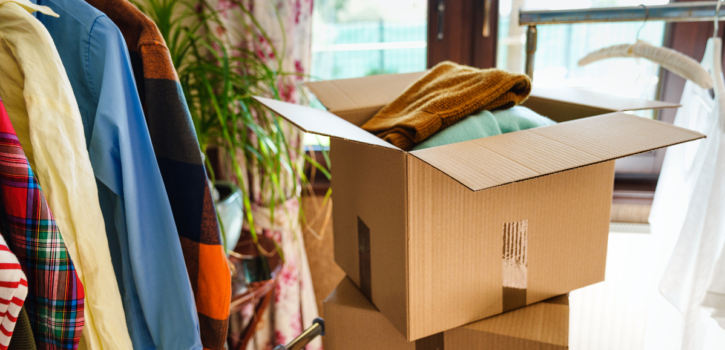What environmental impact does e-commerce have?
The growth of e-commerce in Europe continues unabated! During the last three years, a 9% increase has been recorded, and a look at this year’s early results shows that January was up +8% on 2023. But with more online shopping comes more parcels, more packaging, more pollution.
So as e-commerce experts, we did some research to analyse the real environmental impact of e-commerce.
What are the environmental impacts of online sales?
Even in 2015, emissions from international trade (around eight billion tonnes) accounted for 1/4 of total global emissions (around 32 billion). And this rate is increasing year-on-year, as e-commerce becomes more widespread on the international scene. In 2021, global e-commerce sales reached 129.1 billion euros and cross-border transactions became even more numerous.
The use of the internet for buying has major consequences for the environment.
Breakdown of greenhouse gas emissions generated by the e-commerce industry
Packaging
Most of the greenhouse gas emissions generated by the e-commerce industry come from the packaging of goods (around 45% of total emissions).
Freight transport
Freight transport is another major source of CO2, and this is unlikely to improve over time. According to an OECD study, greenhouse gas emissions from freight transport are set to quadruple between 2010 and 2050.
Product manufacture
The products delivered are not always manufactured in an environmentally-friendly way. They sometimes use non-recyclable materials or environmentally harmful practices.
Servers and web hosting
Another negative aspect of e-commerce from an environmental point of view is the servers that host online shops and browsers. They run non-stop and therefore consume a lot of energy. This causes the production of greenhouse gases linked to e-commerce to soar, as does Internet browsing by customers.
What can be done to reduce the carbon footprint of e-commerce?
1. Minimise travel for consumers and delivery personnel
To reduce the impact of e-commerce on the environment, we need to limit car journeys (according to ADEME – the French Environment and Energy Management Agency – ⅓ of parcel pick-ups are currently made by car). This includes the journeys of both delivery drivers and consumers.
Here are some good practices to implement:
- increase the number of collection points available over the country
- encourage customers to walk, cycle or take public transport to collection points
- prevent failed deliveries
- limit the number of returns, particularly if they involve travel by the consumer
To reduce the need for customers to return their products, you can offer them virtual fitting on your site.
2. Reduce packaging 📦
ADEME provides very clear recommendations on packaging. The aim is to “reduce the percentage of empty space in parcels (estimated at 50%) by better matching the container to the contents”.
This will result in:
- reducing the volume of parcels
- reducing the quantity of packaging produced
- maximising space in delivery trucks
Reducing over-packaging will allow more parcels to be delivered in fewer round trips, helping to improve the environmental impact of e-commerce.
To take things a step further, we also advise you to opt for more environmentally-friendly packaging made from recycled, recyclable or biodegradable materials. ♻️
3. Avoid express/air delivery
Finally, another good practice is to avoid using air freight. For this reason, express deliveries from abroad must be limited. In addition, we encourage you to promote collection point delivery. This type of delivery requires fewer stops for the driver, which limits road pollution.
🚨
According to estimates by Statista, the environmental impact of e-commerce-specific logistics will be much greater in the world’s 100 largest cities by 2030. The number of delivery vehicles could reach 7.2 million by the end of the decade, and total emissions from parcel shipping are expected to generate 25 million tonnes of CO2.
4. Raising consumer awareness of “eco-responsibility”
Raising awareness is an excellent way of reducing the environmental impact of your e-commerce site. For example, you can highlight the most environmentally-friendly delivery methods, encourage batch purchases of items or limit the number of shipments.
The We Are Jolies e-commerce shop offers a sliding scale of prices as consumers add products to their shopping baskets. As well as increasing the average order value, an essential e-commerce KPI to track, this encourages web users to add all the products they need before placing an order (pyjamas, swimwear, bras, etc.).
Another eco-friendly practice implemented by this company: it takes back any clothing and underwear, regardless of condition or brand, to give them a second life. For every kilo of textile collected, 25 kilos of CO2 are saved.
5. Favouring eco-friendly data centres and hosting providers
The final action point is to limit the energy consumption of data centres and web hosts. To do this, we advise you to switch your current web host for a more eco-friendly certified web host.
Which tool should you use to measure the ecological footprint of your e-commerce site?
Several software programmes have been created to help e-tailers identify and reduce the ecological footprint of their websites.
These include:
- Carbon Calculator Website
- Ecoindex
- the extension “Green IT analysis” developed by GreenIT
The environmental impact of e-commerce: a recap
As an e-tailer, you have a major role to play in reducing the e-commerce sector’s impact on the environment. You need to transform your processes to encourage more responsible consumption, as well as to inform consumers about how your products are produced and transported.
Here’s a reminder of the actions you can take to improve your practices:
- minimise travel for consumers and delivery personnel
- reduce the use of packaging
- avoid express and/or air delivery
- raise consumer awareness of “eco-responsibility”
- favour eco-friendly data centres and hosting providers
To go even further, here are are 9 ideas for making your e-commerce business more eco-friendly.







